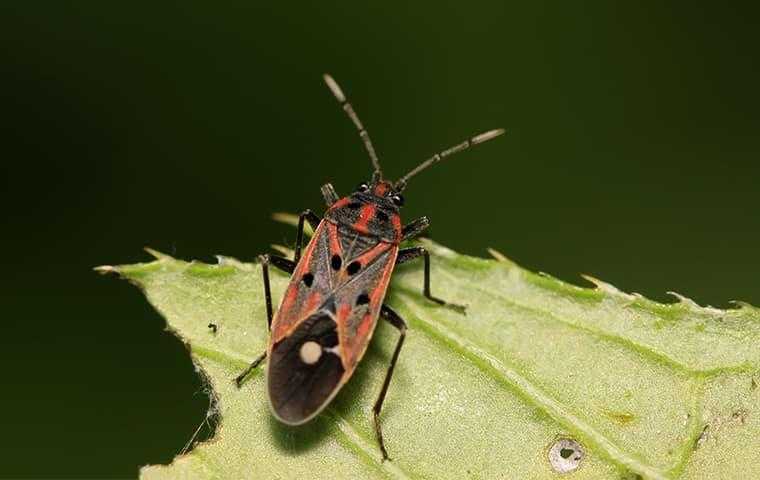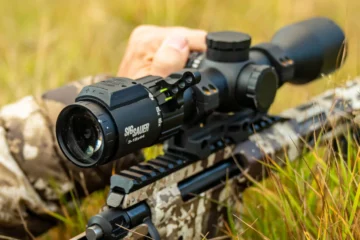A lush, green lawn can transform any yard into a peaceful oasis. However, chinch bugs are tiny pests that can wreak havoc on even the most well-maintained lawn. These insects may be small, but their impact is anything but. Chinch bugs feed on grass by piercing the blades and sucking out the sap, leaving behind brown patches of dead or dying turf. If left unchecked, they can quickly spread, leading to widespread damage. To protect your lawn from these destructive invaders, it’s essential to learn how to identify chinch bugs, understand their life cycle, and implement effective methods for eradication.
What Are Chinch Bugs?
Chinch bugs are small, sap-sucking insects primarily targeting grasses, especially varieties like St. Augustine, zoysia, and Bermuda grass. While they may be less than 1/8 of an inch long, these pests can cause significant damage when they gather in large numbers. Chinch bugs thrive in hot, dry conditions, making them particularly problematic during summer when lawns are stressed from the heat.
Adult chinch bugs have black bodies and distinctive white wings with black markings, making them somewhat easy to identify if you know what to look for. However, the nymphs—young chinch bugs—do most of the damage. Nymphs are red with a white stripe across their backs and lack wings. As they mature, they pass through several stages, eventually growing into adults that continue the destructive cycle.
Signs of a Chinch Bug Infestation
One of the first signs that chinch bugs have infiltrated your lawn is the appearance of small, irregular patches of yellowing or browning grass. These areas may start small but can spread quickly as the bugs continue feeding. Because chinch bugs thrive in hot, dry conditions, these damaged patches often appear during the peak of summer when grass is most vulnerable.
Another telltale sign of chinch bugs is the sharp contrast between damaged and healthy grass. The affected areas will typically have dead, straw-like grass surrounded by lush green turf. This stark difference is because chinch bugs attack grass at its base, draining it of nutrients and moisture. Over time, this damage causes the grass to wither and die.
To confirm a chinch bug infestation, you can perform a simple “flotation test.” Cut both ends off of a large coffee can or similar container and press it several inches into the soil near the edge of the affected area. Fill the can with water and wait for a few minutes. If chinch bugs are present, they will float to the surface, allowing you to see them more easily. This test can help you determine the extent of the infestation and where to focus your eradication efforts.
Eradicating Chinch Bugs: Step-by-Step Approach
Once you’ve identified that chinch bugs are causing damage to your lawn, it’s essential to act quickly to prevent further destruction. While chinch bugs can be difficult to control, several effective methods exist for getting rid of them and restoring your lawn to its former glory.
Natural Solutions for Controlling Chinch Bugs
For homeowners who prefer an eco-friendly approach to pest control, several natural methods can help manage chinch bug populations without the use of harsh chemicals. One of the most effective natural enemies of chinch bugs is the introduction of beneficial insects. Ladybugs, predatory ants, and certain types of wasps naturally feed on chinch bugs and can help reduce their numbers over time.
Maintaining a healthy lawn through proper care and maintenance can make your grass more resilient to chinch bug infestations. Keeping your grass well-watered during hot, dry periods can help mitigate the effects of chinch bugs, as these pests prefer dry, stressed lawns. Proper mowing and aeration can also promote more vital root systems, making it harder for chinch bugs to establish themselves.
Chemical Treatments for Severe Infestations
In severe infestations, chemical treatments may be necessary to eradicate the problem. Insecticides specifically designed to target chinch bugs can be highly effective when applied correctly. It’s important to choose a product labeled for use on chinch bugs and follow the instructions carefully to ensure safety for your lawn and the environment.
Timing is crucial when using insecticides. Because chinch bugs are most active during the summer, applying treatments in late spring or early summer can help prevent them from causing significant damage. Be sure to treat the affected areas and the surrounding healthy grass, as chinch bugs can quickly move from one patch of turf to another.
For best results, apply insecticides when the lawn is dry, and avoid watering the grass for at least 24 hours after application. This allows the chemical to penetrate the soil and reach the chinch bugs where they are feeding.
Preventing Future Infestations
While treating an existing chinch bug problem is essential, preventing future infestations is just as important. Following a few critical practices can help ensure that chinch bugs don’t return to your lawn.
First, maintaining a healthy, well-watered lawn is one of the best defenses against chinch bugs. These pests are less likely to target lush, hydrated grass, so regular watering—especially during hot, dry periods—can reduce the likelihood of infestation.
Secondly, it is crucial to keep your lawn properly mowed and free of thatch buildup. Thatch is a layer of dead grass and organic matter that accumulates at the base of the turf. While a small amount of thatch is normal, excessive thatch provides the perfect hiding place for chinch bugs. Regularly aerating your lawn and removing excess thatch will make your yard less attractive to these pests.
Lastly, it is helpful to inspect your lawn for signs of damage regularly. Chinch bugs can spread quickly, and catching an infestation early can make a big difference in the amount of damage they cause. By staying vigilant, you can address any chinch bug activity before it becomes a significant problem.
Conclusion
Chinch bugs may be small, but the damage they cause to lawns can be extensive. If you notice browning patches of grass, particularly during the summer, it’s important to check for signs of these pests. Yard Dawgs Lawn Care can identify and address a chinch bug infestation early, you can prevent widespread damage and save your lawn from further destruction. Quick action is key whether you opt for natural control methods or chemical treatments. With the right approach and ongoing lawn care, you can protect your grass from chinch bugs and enjoy a healthy, vibrant yard all season.
Keep an eye for more latest news & updates on Buzz Slash!




